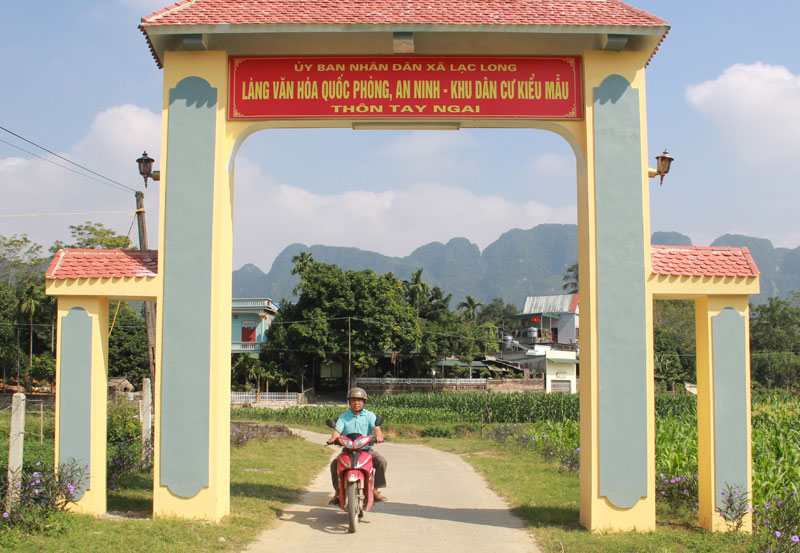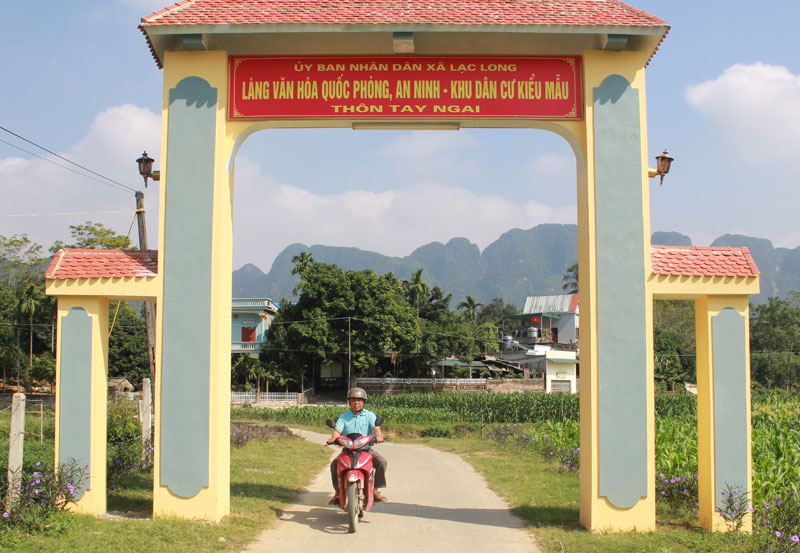
(HBO) Residents in TayNgai hamlet, Lac Long commune of Lac Thuy district are actively participating in a new-style rural area development programme which helps promote infrastructure systems and improve their living conditions.
Laughter of locals calling oneanother to work fills the roads fromthe gate to the inside of Tay Ngai village.
The village now counts 98 households with 353 inhabitants. Before 2011, when the programme was not implemented, the life of locals was full with difficultieswhileinfrastructure facilities did not meet the demand.
joining the programme, locals in Tay Ngai village, Lac Long commune, Lac Thuy district contributed over 20 million VND to build the gate of the village.
Facing thesituation, the village’s management board actively promotedcampaign to raise public awareness of the programme.
It also encouraged local people to donate their land, cash and working days to build works that they directly benefit.
Typically, 19 households donated more than 2,500 sq.m of land for building rural roads;local people also contributed more than 20 million VND to build the village’s gate; 6 million VND for leveling and filling the village’s roads, and nearly 23 million VND for building a concrete yard of the cultural house.
To raise the per capita income and reduce the number of poor households in the hamlet, locals have converted the inefficient tea growing areasinto those for planting citrus trees, with 40 ha of orange and grapefruit.
At the same time, the locality maintained the 15 ha for the cultivation of Shan Tuyet tea, and 39 ha of water rice.
Tay Ngai hamlet was chosen as a pilot locality in the district in the project "Don dien doi thua”, which welcomes the exchanging of small farming plots for a better reallocation of agricultural lands. The hamlet’s management board has taken many creative ways to help locals understand more about the policy.
Thanks to these efforts, the villagers’ average annual per capita incomehas been increased to 35 million VND, while the rate of poor households brought down to 8.1 percent.
All the rural transport roads have been concreted or asphalted, while 90 percent of the roads linking fields have met the demand of agricultural production mechanization.
The hamlet’s cultural house has beenupgraded witha wall and a sports ground covering 1,000 square metres.
The rate of villagers employed has reached 90.8 percent; 100 percent of households have accessclean water sources and 84.1 percent of local households are recognised as cultural families./.
The emulation movement "Hoa Binh joining hands to build new-style rural areas” has been widely spreading, becoming a driving force that motivates the localities to renew rural landscapes and improve the material and spiritual lives of the residents. In this movement, the people play a central role-both as the main implementers and direct beneficiaries of its outcomes.
In response to the global digital revolution, Hoa Binh Newspaper is transforming itself into a modern and multi-platform media hub, blending cutting-edge technology with a restructured newsroom and a new generation of tech-savvy journalists.
Hoa Binh province’s Association of the Elderly recently held a conference to review the project on expanding the inter-generation self-help club model until 2025.
In a move to implement Resolution No. 57-NQ/TW, issued on December 22, 2024 by the Politburo, which targets breakthroughs in science-technology development, innovation, and digital transformation, the Hoa Binh provincial Department of Health has issued a plan to roll out the "Digital Literacy for All” campaign within the local health sector.
An Nghia Commune (Lạc Sơn District) is one of the communes that achieved the tha standard of the national new rural area in 2018. Entering a new development phase, the commune is now trying to meet the criteria for the advanced new rural development. With the strong political will and the public consensus, the commune is gradually overcoming the challenges to reach this goal, aiming for the sustainable development.



